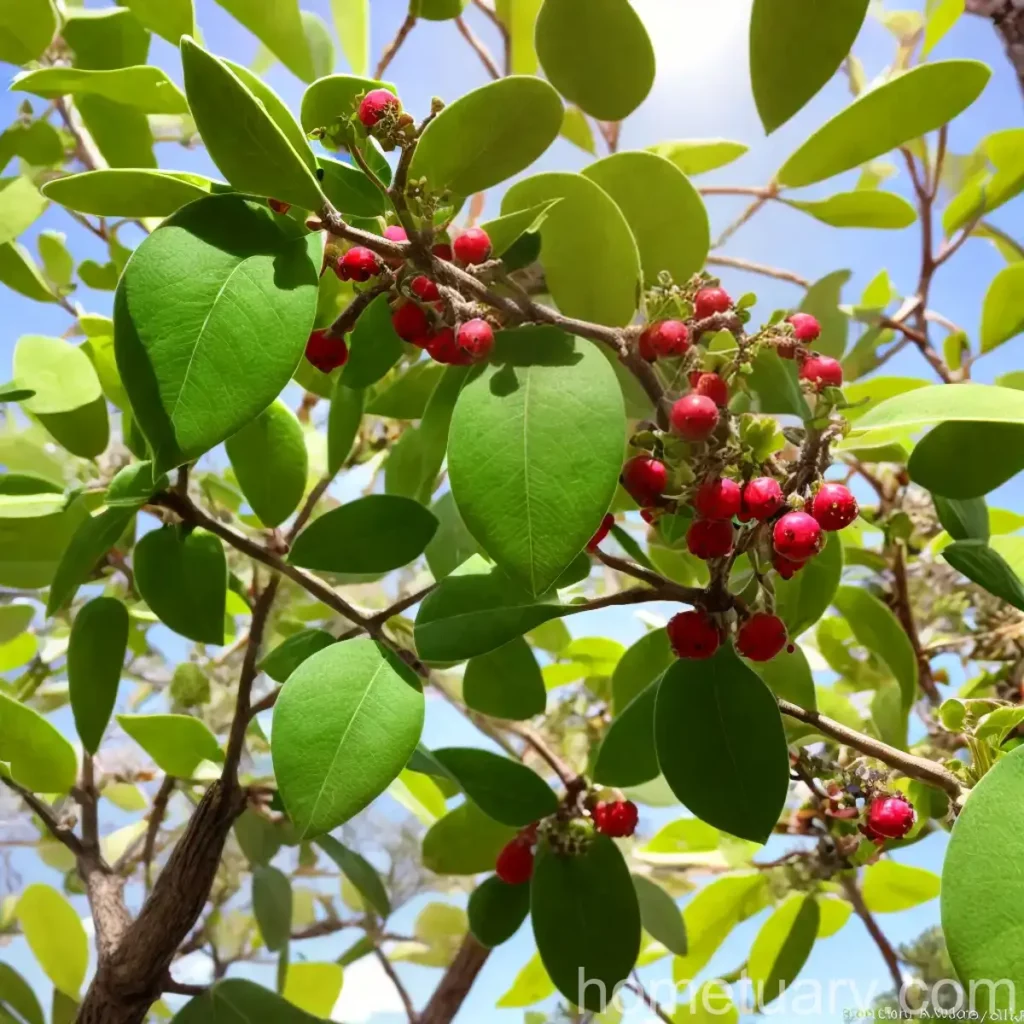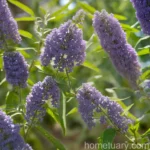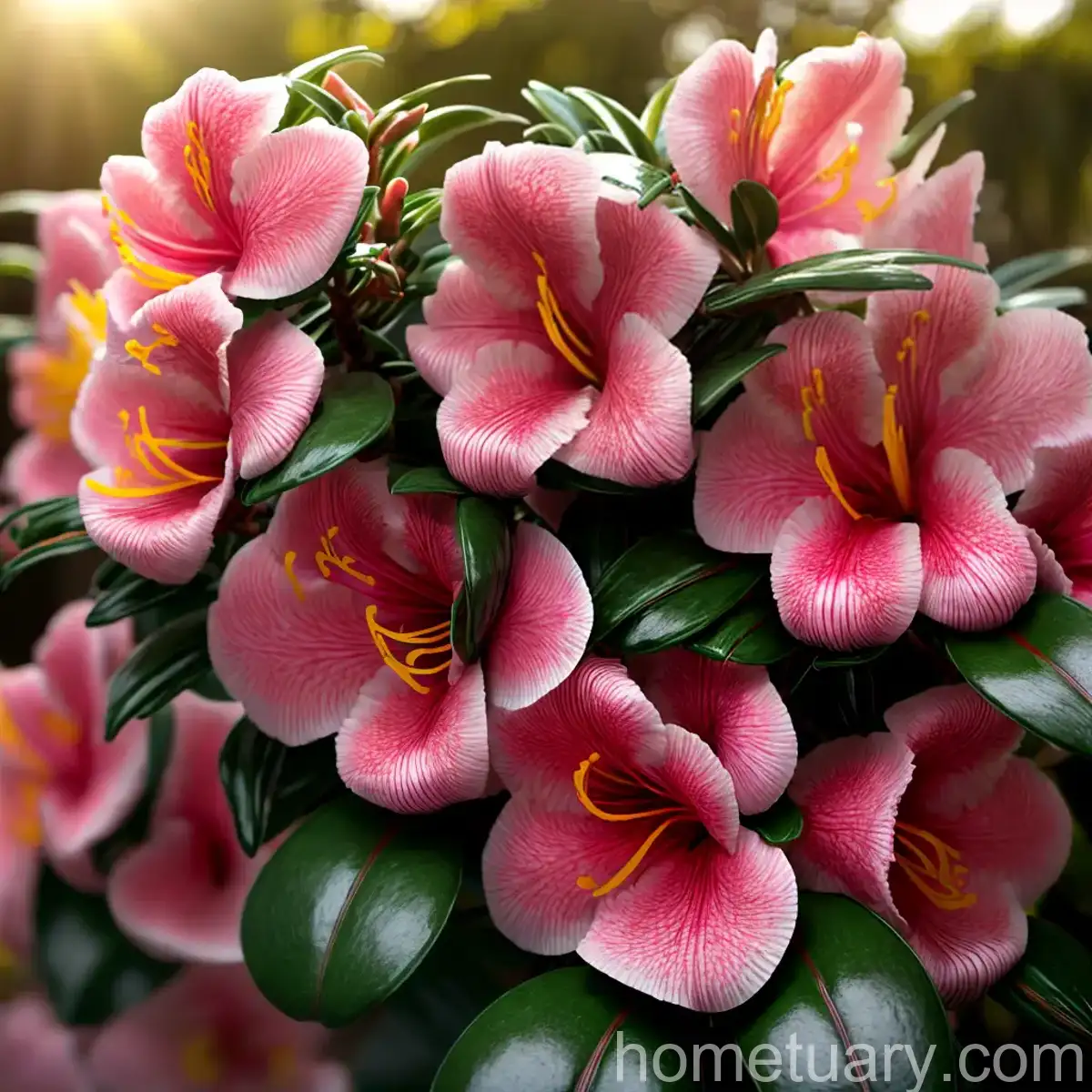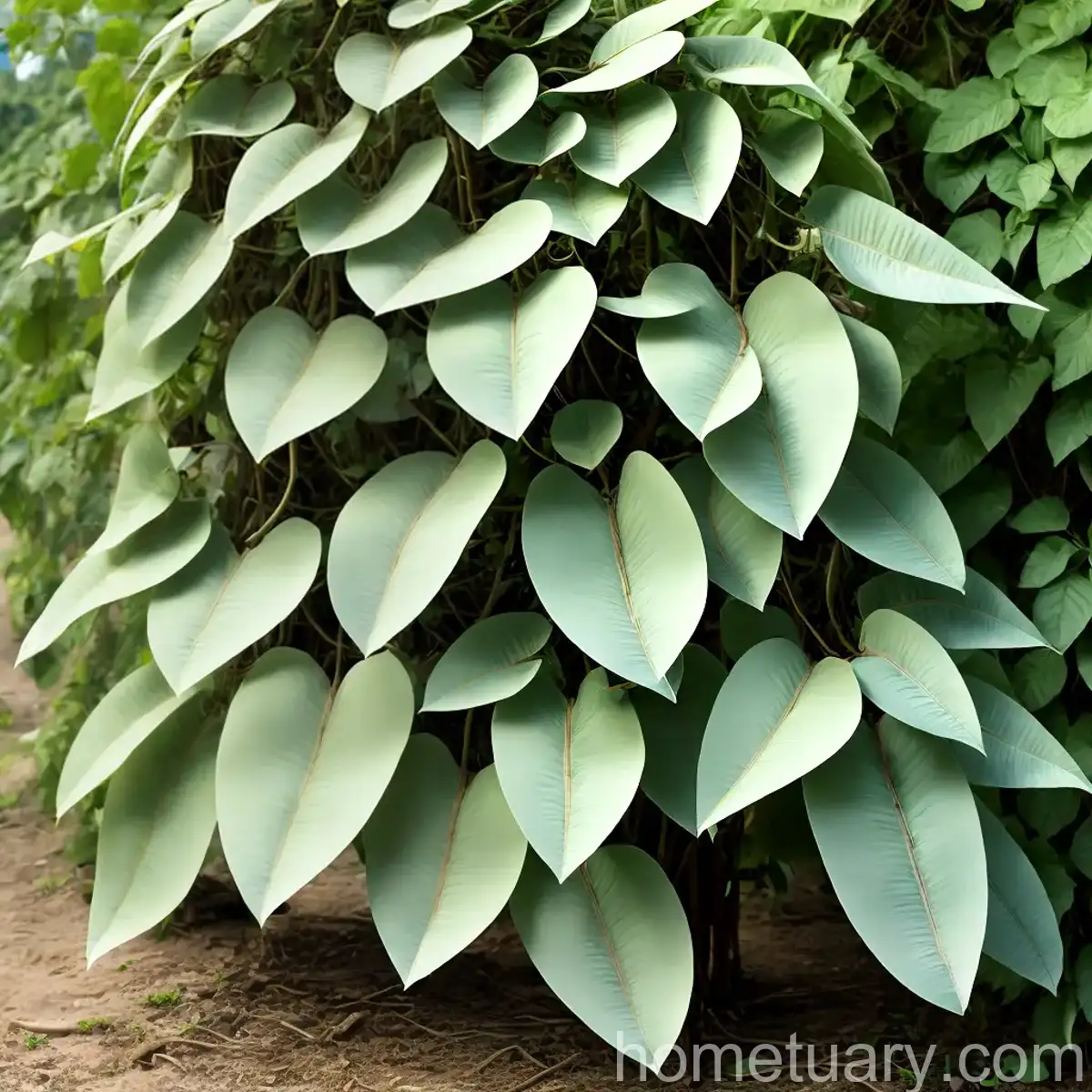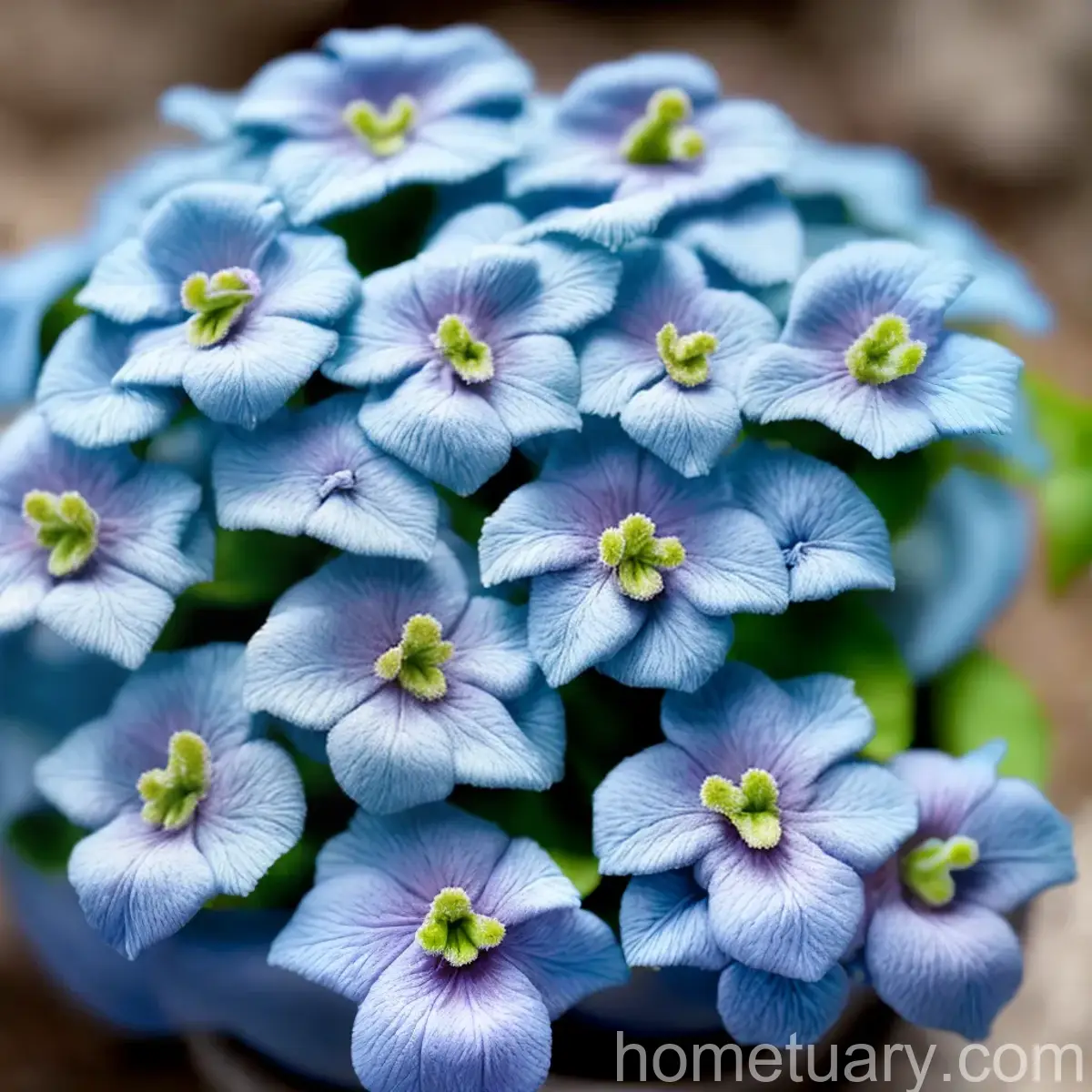The Texas Barometer Bush (Leucophyllum frutescens)
The Texas Barometer Bush (Leucophyllum frutescens) is a resilient and visually captivating plant that is native to Texas and perfectly suited to its often harsh and arid climate. Recognized for its striking purple or blue flowers and its adaptability to extreme heat and drought conditions, this plant has become a popular choice for both residential and commercial landscaping. In this comprehensive guide, we will explore the various aspects of this remarkable plant, from its cultural significance to its maintenance and care requirements.
What is the Texas Barometer Bush?
The Texas Barometer Bush, also known as the Texas Sage, Texas Ranger, or Silver Leaf, is a species of flowering shrub within the Scrophulariaceae family. This evergreen shrub is characterized by its small, silvery leaves and vibrant, tubular flowers that bloom after rain, making it a visually striking addition to any landscape. With its ability to thrive in arid and semi-arid environments, the Texas Barometer Bush has become an emblematic plant of the Texas desert landscape.
Key Takeaways
- Scientific Name: Leucophyllum frutescens
- Common Names: Texas Sage, Texas Ranger, Silver Leaf
- Family: Scrophulariaceae
- Native Range: Texas, Northern Mexico
- Drought Tolerance: High
- Sunlight Requirement: Full sun
- Soil Preference: Well-drained, sandy or gravelly soils
Now, let’s delve deeper into the various aspects of the Texas Barometer Bush, including its cultural significance, uses, care requirements, propagation, common pests and diseases, and much more.
Culture
Uses
The Texas Barometer Bush holds significant cultural and ecological importance in the regions where it naturally occurs. Apart from its aesthetic appeal in landscaping, this plant also serves several practical and environmental purposes:
- Landscaping: The vibrant blooms and silvery foliage of the Texas Barometer Bush make it a popular choice for landscaping in dry and semi-arid regions, adding color and visual interest to gardens, commercial landscapes, and public spaces.
- Soil Stabilization: Due to its extensive root system and resilience, the Texas Barometer Bush is used to stabilize soils in arid areas, preventing erosion and soil loss during heavy rains or winds.
- Wildlife Habitat: The plant’s flowers attract pollinators such as bees and butterflies, contributing to the local ecosystem’s biodiversity.
Water
The Texas Barometer Bush is a drought-tolerant plant, making it well-adapted to the arid climate of Texas and similar regions. Once established, it requires minimal supplemental watering and can survive on natural rainfall. When cultivated in landscapes, it is essential to avoid overwatering, as this can lead to root rot and other issues.
- Watering Frequency: Water deeply only when the soil is dry to the touch, especially during the plant’s initial establishment period.
- Established Plants: Once established, the Texas Barometer Bush generally does not require regular watering, relying on natural rainfall to meet its moisture needs.
Sunlight
As a sun-loving plant, the Texas Barometer Bush thrives in full sunlight and does not tolerate shade well. When selecting a location for planting, it is crucial to provide the plant with the appropriate amount of sunlight to ensure healthy growth and prolific blooming.
- Sunlight Requirement: Full sun, at least 6 to 8 hours of direct sunlight per day.
- Shade Tolerance: Limited, prefers full sun exposure for optimal growth and flowering.
Fertilizer
Proper fertilization is essential for promoting healthy growth and abundant flowering in the Texas Barometer Bush. However, this plant is not particularly demanding in terms of nutrients, and excessive fertilization can lead to excessive foliage growth at the expense of flowering.
- Fertilizer Type: Use a balanced, slow-release fertilizer formulated for flowering shrubs or general landscape plants.
- Application Frequency: Apply fertilizer in early spring, before the onset of the plant’s active growth period.
- Application Rate: Follow the manufacturer’s guidelines for the specific fertilizer product being used.
Soil
The Texas Barometer Bush thrives in well-drained, sandy, or gravelly soils typical of arid and semi-arid regions. While it is adaptable to various soil types, it is crucial to ensure that the soil provides adequate drainage to prevent waterlogging and root rot.
- Soil Type: Well-drained, sandy or gravelly soils
- Soil pH: Slightly acidic to neutral (pH 6.0 to 7.0)
- Soil Preparation: Prior to planting, amend heavy clay soils with organic matter or sand to improve drainage.
Pruning
Pruning is an essential aspect of Texas Barometer Bush maintenance, contributing to the plant’s overall health, shape, and flowering performance. Proper pruning helps to rejuvenate the plant, remove dead or diseased branches, and promote a dense, compact growth habit.
- Pruning Time: Early spring, after the last frost date, is the ideal time for pruning the Texas Barometer Bush.
- Pruning Techniques: Use clean, sharp pruning shears to remove dead or damaged branches, shape the plant, and encourage new growth from the base.
Propagation
While the Texas Barometer Bush is primarily propagated through semi-hardwood cuttings, it can also be grown from seeds, though this method is less common due to the plant’s slow growth from seed.
Propagation from Cuttings
- Cutting Preparation: Take 4 to 6-inch semi-hardwood cuttings from healthy, disease-free stems, ensuring that each cutting has several leaf nodes.
- Rooting Medium: Plant the cuttings in a well-draining rooting medium, such as a mix of peat moss and perlite or coarse sand.
- Rooting Hormone: Dip the lower end of the cutting in a rooting hormone to promote root development.
- Rooting Conditions: Place the cuttings in a warm, humid environment with indirect sunlight, maintaining consistent moisture levels.
- Transplanting: Once the cuttings have developed a healthy root system, transplant them into individual containers or directly into the landscape.
Container Popularity
The Texas Barometer Bush is well-suited for container cultivation, offering a compact yet visually impactful addition to patios, decks, and outdoor living spaces. When grown in containers, the plant’s drought tolerance and low maintenance requirements make it an ideal choice for water-wise and xeriscaped gardens.
Container Requirements
- Container Size: Select a container that provides ample space for root development, with drainage holes at the base to prevent waterlogging.
- Potting Mix: Use a well-draining potting mix formulated for cacti and succulents or create a custom mix using sand, perlite, and peat moss.
- Watering: Monitor the soil moisture levels closely and water the plant only when the top inch of the soil is dry to the touch.
Common Diseases
While the Texas Barometer Bush is generally resilient and disease-resistant, it can be susceptible to certain fungal infections and root rot if grown in poorly drained soil or subjected to excessive irrigation. Recognizing the early signs of disease and promptly addressing them are essential for maintaining the plant’s health and vigor.
Disease Diagnosis
- Powdery Mildew: Identified by the presence of powdery white patches on the leaves, usually occurring in humid or poorly ventilated conditions.
- Root Rot: Symptoms include wilting, yellowing, and eventual collapse of the plant, often due to waterlogged or compacted soil.
Common Pests
While relatively resistant to pests, the Texas Barometer Bush may occasionally be affected by insect infestations, including spider mites, aphids, and scale insects. Regular monitoring and early intervention can help prevent pest-related damage and maintain the plant’s overall health.
Pest Management
- Natural Predators: Encourage natural predators such as ladybugs and lacewings to control aphid and scale insect populations.
- Horticultural Oils: Use horticultural oils to suffocate and eliminate spider mites and scale insects without causing harm to beneficial insects or the plant itself.
Botanist’s Tips
- Mulching: Apply a layer of organic mulch around the base of the plant to conserve soil moisture, suppress weeds, and insulate the roots against temperature fluctuations.
- Companion Planting: Pair the Texas Barometer Bush with other drought-tolerant and sun-loving plants, such as succulents and ornamental grasses, to create a harmonious and low-maintenance landscape.
- Xeriscaping: Incorporate the Texas Barometer Bush into xeriscape designs and water-wise gardens, combining it with similarly resilient and efficient plants to create environmentally sustainable landscapes.
Fun Facts
- The Texas Barometer Bush is named for its tendency to bloom profusely after significant rain events, serving as a visual indicator of the region’s weather patterns.
- In addition to its ornamental value, the plant has been used in traditional medicine by indigenous cultures for its purported healing properties.
Links to External Resources
For further information and resources on the Texas Barometer Bush and related topics, feel free to explore the following links:
- Texas A&M AgriLife Extension – Texas Sage
- Lady Bird Johnson Wildflower Center – Leucophyllum frutescens
- University of Florida IFAS Extension – Texas Sage for the Florida Landscape
- Arizona State University – Desert Landscaping with Native Plants
- Texas Native Plants Database
- Texas Agricultural Extension Service – Xeriscaping: Landscape Design for Water Efficiency
Conclusion
The Texas Barometer Bush, with its remarkable drought tolerance, striking blooms, and low maintenance requirements, stands as a testament to nature’s ability to thrive in challenging environments. Whether incorporated into residential landscapes, public gardens, or commercial spaces, this plant embodies the enduring beauty and resilience of Texas and its native flora. By understanding its cultural significance, growth requirements, and potential uses, we can appreciate and cultivate the Texas Barometer Bush to its fullest potential, contributing to the sustainable and vibrant landscapes it inherently represents.

